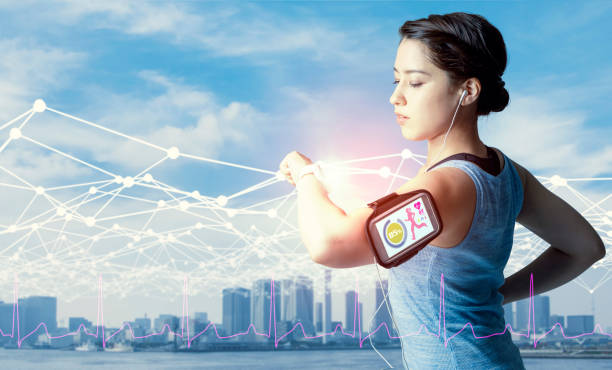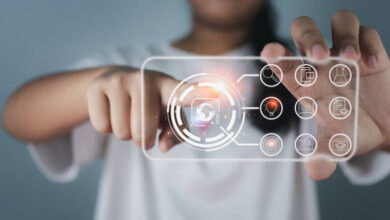
| Heading | Subheadings |
| Introduction | Definition of wearable health devices and IoT integration |
| Importance | Advantages of developing wearable health devices with IoT |
| Components | Key components required for developing IoT-enabled wearables |
| Sensor Technology | Exploring sensor technologies for health data collection |
| Connectivity | Different connectivity options for IoT-enabled wearables |
| Data Analysis | Role of data analysis and AI in extracting insights |
| Use Cases | Real-world applications of wearable health devices with IoT |
| Challenges | Overcoming challenges in developing wearable health devices |
| Ethical Considerations | Addressing ethical concerns in data collection and usage |
| Future Prospects | Emerging trends and potential advancements in wearable health |
| Conclusion | Summarising the significance of IoT in wearable health devices |
| FAQs | Addressing common questions and concerns |
In today’s rapidly evolving technological landscape, the integration of wearable health devices with the Internet of Things (IoT) has revolutionised the healthcare industry.
This convergence combines real-time health data collection, connectivity, and data analysis to provide users with valuable insights into their well-being.
In this article, we will delve into the process of developing wearable health devices with IoT and the myriad benefits they bring.
Introduction To Wearable Health Devices

Techtarget says wearable health devices, ranging from fitness trackers to smartwatches, have become ubiquitous in monitoring various health metrics.
By incorporating IoT capabilities, these devices can seamlessly connect to the internet, enabling real-time data transmission and analysis.
This integration opens doors to personalised health insights, remote patient monitoring, and advancements in medical research.
Importance To Wearable Health Devices
The fusion of wearable health devices and IoT offers a host of advantages that impact both individuals and healthcare providers.
Advantages of Developing Wearable Health Devices with IoT
Real-Time Monitoring: Wearables equipped with IoT sensors can continuously monitor vital signs, providing users and healthcare professionals with real-time health updates.
Data-Driven Insights: The influx of data from wearable devices, combined with AI algorithms, yields actionable insights for improved health management.
Remote Patient Monitoring: IoT-enabled wearables allow healthcare providers to remotely monitor patients’ conditions, reducing hospital visits and enhancing patient care.
Early Detection: Timely alerts from wearable devices can indicate potential health issues, allowing users to seek medical attention promptly.
Holistic Health Tracking: IoT integration enables the collection of diverse health metrics, creating a comprehensive health profile.
Components
Developing wearable health devices with IoT involves a combination of essential components that ensure accurate data collection and connectivity.
Key Components Required
Sensors: High-quality sensors capable of measuring various health parameters, such as heart rate, temperature, and activity levels.
Microcontrollers: Processing units that gather sensor data and facilitate communication with external devices.
Connectivity Modules: Wi-Fi, Bluetooth, or cellular modules that establish connections for data transmission.
Power Management: Efficient power management systems to optimise battery life while ensuring continuous operation.
Enclosures: Protective enclosures that house the components and ensure durability and user comfort.
Sensor Technology
The accuracy of wearable health devices heavily relies on advanced sensor technology.
Exploring Sensor Technologies for Health Data Collection
Photoplethysmography (PPG): Utilises light to measure blood volume changes, enabling heart rate and oxygen saturation monitoring.
Electrocardiography (ECG): Measures the heart’s electrical activity, providing insights into heart rate variability and detecting arrhythmias.
Accelerometers: Detect motion and acceleration, crucial for activity tracking and assessing movement patterns.
Temperature Sensors: Measure body temperature, aiding in fever detection and monitoring variations.
Bioimpedance Sensors: Estimate body composition by analysing the resistance of body tissues to electric currents.
Connectivity
IoT-enabled wearables leverage various connectivity options to transmit data to other devices or cloud platforms.
Different Connectivity Options for IoT-Enabled Wearables
Bluetooth Low Energy (BLE): Suitable for short-range communication between wearables and smartphones, conserving battery life.
Wi-Fi: Enables wearables to connect to the internet directly, allowing seamless data transfer to cloud servers.
Cellular Networks: Offers wider coverage and constant connectivity, making it ideal for remote monitoring and real-time data transmission.
Data Analysis
The collected health data becomes truly valuable when subjected to thorough analysis.
Role of Data Analysis and AI in Extracting Insights
Real-Time Analysis: AI algorithms process data in real time, identifying trends, anomalies, and actionable insights.
Pattern Recognition: AI can identify patterns in users’ health data, facilitating early detection of irregularities.
Predictive Analysis: By analysing historical data, AI can predict potential health issues and offer preventive suggestions.
Personalised Recommendations: Data-driven insights enable wearable devices to provide personalised health recommendations to users.
Use Cases
According to ResearchGate.com, wearable health devices integrated with IoT find applications across various domains.
Real-World Applications of Wearable Health Devices with IoT
Chronic Disease Management: Wearables monitor conditions like diabetes, notifying users of glucose levels and insulin requirements.
Ageing Population: IoT-enabled wearables aid in monitoring the elderly, detecting falls, and tracking vital signs.
Sports and Fitness: Athletes use wearable devices to optimise training routines, track performance, and prevent injuries.
Clinical Trials: Researchers collect real-time patient data using wearables, enhancing the accuracy of clinical trials.
Postoperative Care: Wearables monitor patients after surgery, providing doctors with continuous updates on their recovery progress.
Challenges
Developing wearable health devices with IoT presents its set of challenges.
Overcoming Challenges in Developing Wearable Health Devices
Data Security: Protecting sensitive health data from cyber threats and ensuring privacy remains a top priority.
Regulatory Compliance: Wearable health devices must adhere to healthcare regulations, ensuring safe and effective usage.
Battery Life: Ensuring prolonged battery life while maintaining consistent connectivity is a technical challenge.
Data Accuracy: Wearable sensors must provide accurate and reliable data for meaningful health insights.
User Adoption: Educating users about the benefits and functionalities of IoT-enabled wearables plays a crucial role in their acceptance.
Ethical Considerations
As wearable health devices gather sensitive health data, ethical considerations come into play.
Addressing Ethical Concerns in Data Collection and Usage
Informed Consent: Users should be well-informed about how their data will be collected, used, and shared.
Data Ownership: Establishing clear guidelines on data ownership and control is essential.
Anonymization: Balancing data anonymization for privacy with meaningful analysis is a delicate task.
Transparency: Manufacturers and developers must transparently communicate data collection practices and intentions.
Future Prospects
The future of wearable health devices with IoT holds immense potential for advancements.
Emerging Trends and Potential Advancements
AI-Driven Insights: AI algorithms will continuously evolve, providing more accurate health predictions and recommendations.
Remote Monitoring: Wearables will evolve to monitor a broader range of health parameters, reducing hospital visits.
Wearable Ecosystems: Interconnected wearables, medical devices, and healthcare platforms will create comprehensive health ecosystems.
Okay my dear readers, now let us look into the most frequently asked questions about How to develop wearable health devices with IoT.
How long does it take to develop an IoT-enabled wearable health device?
The development timeline varies based on complexity, features, and testing. It can range from several months to a year or more.
Can IoT-enabled wearables detect medical emergencies?
Yes, some wearables can detect abnormalities and trigger alerts for medical emergencies, such as falls or irregular heartbeats.
Are IoT-enabled wearables suitable for all age groups?
Yes, wearables designed with user-friendly interfaces and various health metrics cater to users of all ages.
What role does data analytics play in IoT-enabled wearables?
Data analytics algorithms process the data collected by wearables, transforming it into meaningful insights for users and healthcare professionals.
How can healthcare providers utilise the data collected from wearable health devices?
Healthcare providers can monitor patients remotely, detect anomalies, personalise treatment plans, and engage in preventive care strategies based on wearable data insights.
Are there any privacy concerns with wearable health devices?
Privacy concerns include data security, unauthorised access, and the potential use of health data for commercial purposes.
It’s crucial to choose reputable manufacturers and ensure transparent data usage policies.
What advancements can we expect in wearable health devices in the coming years?
Advancements include enhanced AI-driven analysis, expanded health parameter monitoring, and seamless integration with broader healthcare ecosystems.
These developments will empower users to take a proactive role in managing their health.
Conclusion
The synergy between wearable health devices and IoT has the power to reshape healthcare by enabling personalised health management, remote monitoring, and early detection of health issues.
While challenges and ethical concerns must be navigated, the promise of a healthier future through IoT-enabled wearables is undeniable.








